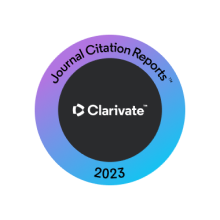Abstract
Objectives: Night Shift work is an increasingly common working order that affects human well-being and it is little known about its arrhythmic role in the cardiovascular system. We aimed to investigate the effect of working at night shifts on P-wave dispersion (Pd), QT and QTc dispersions (QTd, QTcd resp) on surface electrocardiography. Methods: We included 286 foundry workers who work at night shift and 100 foundry workers who work on day time only. The night shift workers were divided into three subgroups according to the length of time they worked at night shift. Surface electrocardiography and blood tests were applied for all participants. Results: Pd, QTd and QTcd values increased in the night shift workers compared to the day time workers (p
Recommended Citation
Uzunget, Sezen Baglan and Sahin, Kader Eliz
(2022)
"Evaluation of ECG Repolarization Parameters In a Worker Cohort Working The Night Shift,"
Journal of the Saudi Heart Association: Vol. 34
:
Iss.
3
, Article 1.
Available at: https://doi.org/10.37616/2212-5043.1309
Creative Commons License

This work is licensed under a Creative Commons Attribution-Noncommercial-No Derivative Works 4.0 License.




